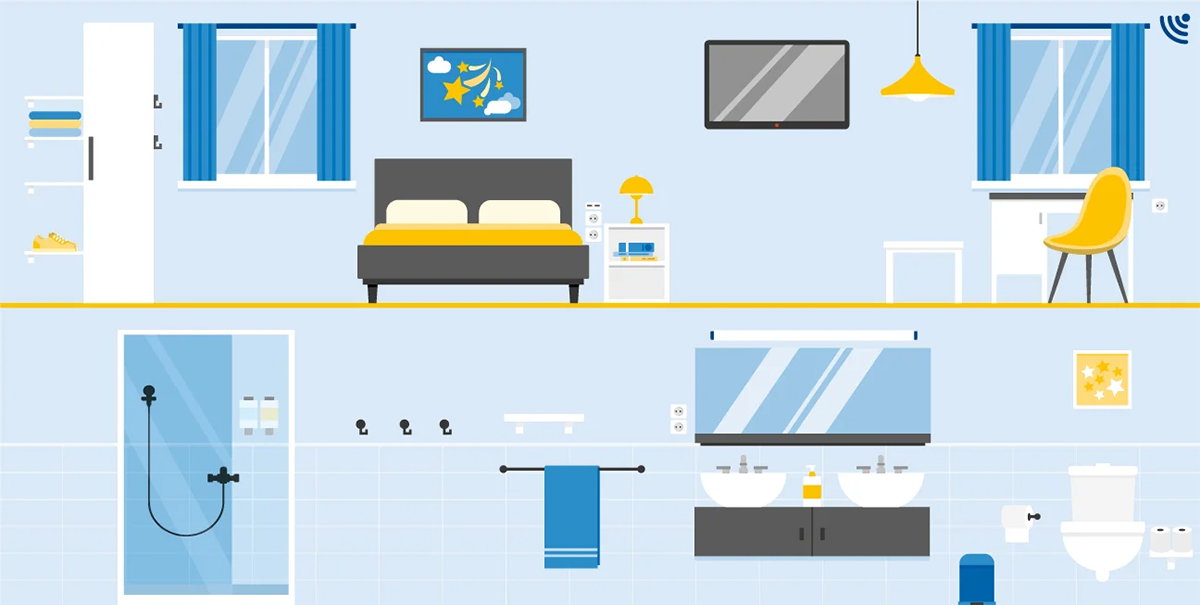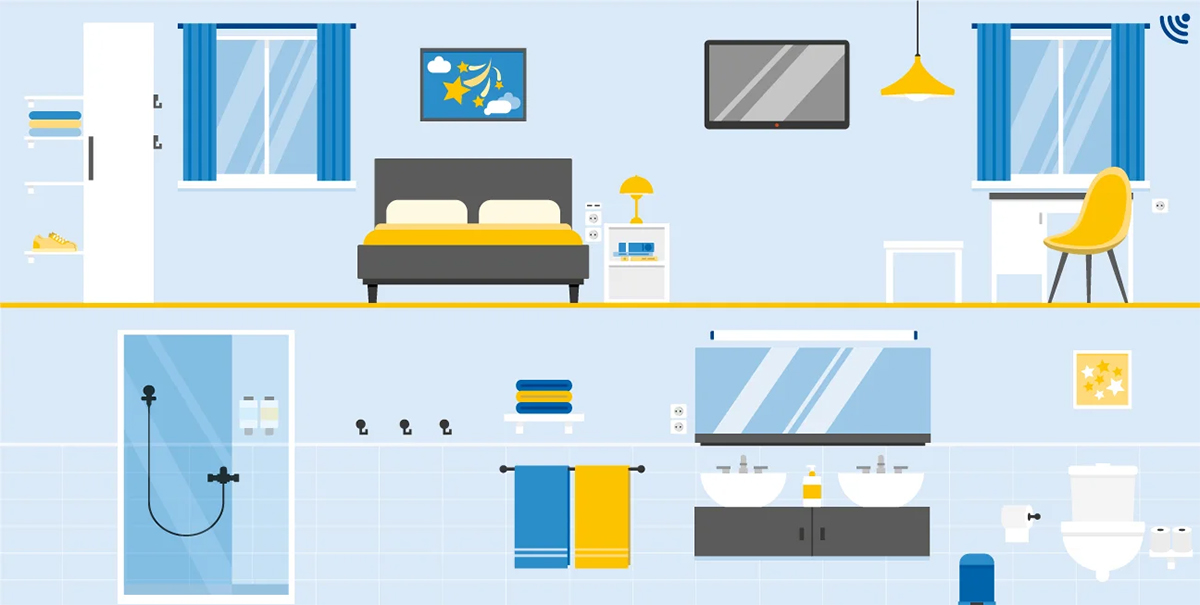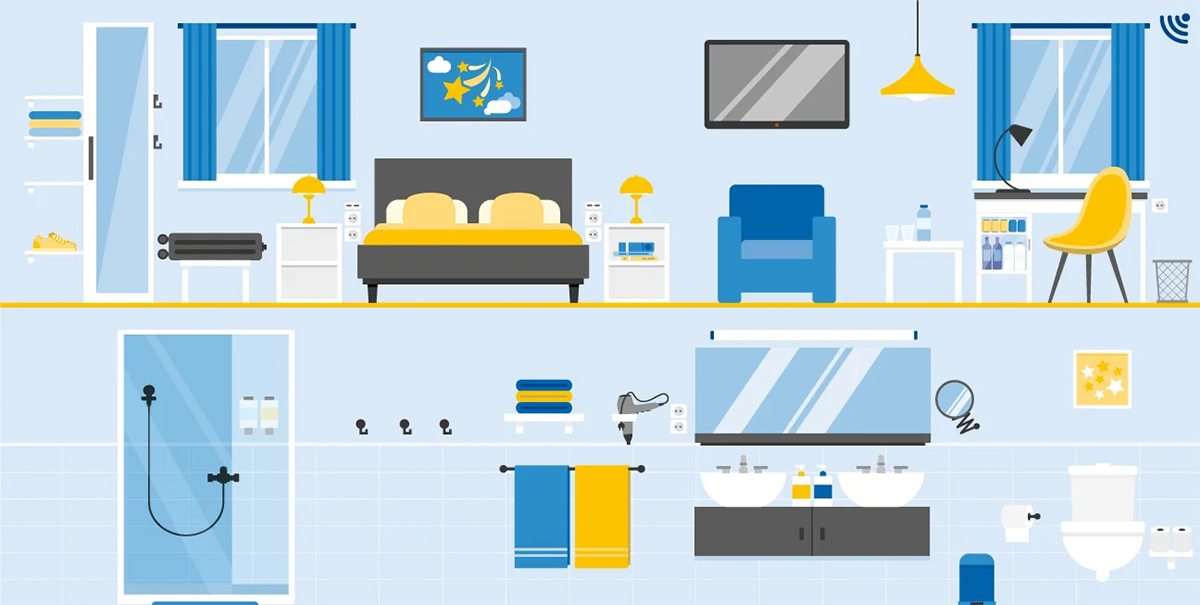The hotel star rating system is a widely recognized method for classifying and ranking hotels based on their overall quality, amenities, services, and facilities. Several different hotel star rating systems exist worldwide, but they are typically represented by a rating from 1 to 5 stars. The more stars, the better the hotel is considered to be.
1-star ratings are given to budget accommodations with basic services and minimal amenities. These hotels are usually affordable and offer limited facilities.
 |
1-star hotel amenities. Photo: hotelstars |
2-star hotels provide simple accommodations with a higher level of comfort and service than 1-star hotels. They may include additional amenities such as restaurants and room service.
 |
2-star hotel amenities. Photo: hotelstars |
3-star hotels are mid-range hotels that offer a comfortable stay with good services and amenities. They typically have restaurants, bars, and may offer amenities such as a gym or conference rooms.
 |
3-star hotel amenities. Photo: hotelstars |
4-star hotels are upscale hotels known for their quality, amenities, and extensive services. These hotels are usually well-equipped, featuring multiple restaurants, spas, and fitness centers.
 |
4-star hotel amenities. Photo: hotelstars |
5-star hotels represent luxury accommodations, offering the highest level of comfort and personalized service. These hotels typically have spacious rooms, high-end dining options, full-service spas, and other premium amenities.
 |
5-star hotel amenities. Photo: hotelstars |
Traditionally, hotel star ratings range from 1 to 5. However, there are some exceptions, such as the United Arab Emirates (UAE), which has a 7-star rating system.
How are star ratings determined? Each official rating system has different categories that hotels must comply with for each star rating. Some systems are granular, with some requirements being mandatory to achieve a rating, while others take a more direct approach.
The ratings are determined by independent organizations using objective criteria, which can include over 200 factors such as room quality, cleanliness, amenities, service standards, food and beverage options, and location accessibility. For instance, there's no specific regulation requiring a hotel to have a swimming pool to achieve a certain star rating. However, 4 and 5-star hotels often include swimming pools as a premium amenity to achieve a higher ranking and attract guests.
These star ratings are provided by various entities, depending on the country. In the US, the rating units are Forbes and AAA, but many hotels advertise themselves as "5-star" without being recognized by these organizations. Hotels in Italy are rated by the government based on specific standards. Standards can vary between regions; for example, a 3-star hotel in Venice might not have the same requirements as a 3-star hotel in Naples.
Atout France and COFRAC are the star rating units in France, requiring hotels to be inspected every 5 years. A 5-star hotel in France can achieve the "Palace" distinction, a separate and higher ranking. Australia uses the Star Ratings Australia system for its official star ratings, although some hotels occasionally self-proclaim as "6-star".
In addition, several other organizations provide ratings, including JTB (Japan Travel Bureau), Michelin Guide (global), Hotelstars Union (Europe), and AA (Automobile Association, UK).
 |
A 5-star hotel room in Hanoi. Photo: Giang Huy |
A 5-star hotel room in Hanoi. Photo: Giang Huy
In Vietnam, the National Administration of Tourism (under the Ministry of Culture, Sports and Tourism) is the agency that assigns star ratings to hotels. The evaluation criteria include facilities (rooms, amenities), service quality, safety, hygiene, and location. The inspection process is carried out by professional assessment teams. Some 5-star hotels in Hanoi are rated according to these standards, such as Sofitel Legend Metropole Hanoi and InterContinental Hanoi Westlake.
While star ratings can be helpful, many hotels operate successfully without them. Instead, they rely on rankings built from reviews by actual guests on Google My Business, TripAdvisor, Booking.com, Agoda, and other platforms. Achieving a high ranking on these platforms can be equally, if not more, important than achieving a specific star rating through traditional methods.
Guests often use hotel stars to choose accommodations that best suit their needs. Luxury travelers often opt for higher-rated hotels, while budget-conscious travelers choose lower-rated options. Travelers can find out exactly how many stars a hotel has by contacting the rating agency, visiting the hotel's official website, or inquiring with the local tourism authority.
Hotels can increase their star rating by adding amenities and providing additional services based on published criteria, then contacting the rating organization.
Tam Anh (According to Siteminder, Hotelstars)












